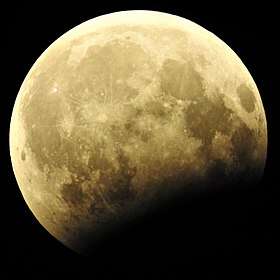April 1948 lunar eclipse
A partial lunar eclipse took place on April 23, 1948. A tiny bite out of the Moon may have been visible at maximum, though just exactly 2.3% of the Moon was shadowed in a partial eclipse which lasted for 34 minutes and 18 seconds. A shading across the moon from the Earth's penumbral shadow should have been visible at maximum eclipse.

Visibility
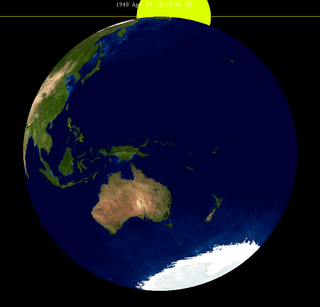
Related lunar eclipses
Lunar year series
| Descending node | Ascending node | |||||
|---|---|---|---|---|---|---|
| Saros | Date Viewing |
Type Chart |
Saros | Date Viewing |
Type Chart | |
| 111 | 1948 Apr 23 |
Partial |
116 | 1948 Oct 18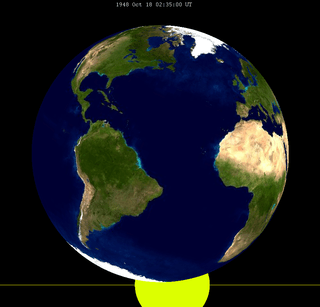 |
Penumbral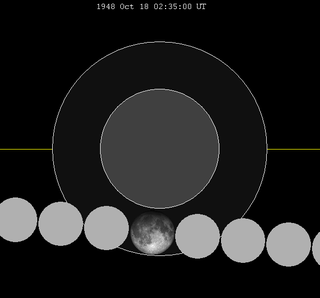 | |
| 121 | 1949 Apr 13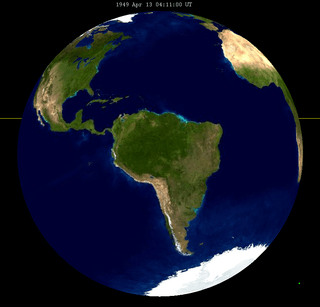 |
Total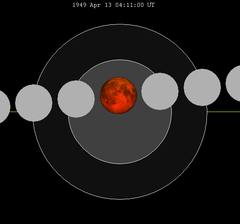 |
126 | 1949 Oct 07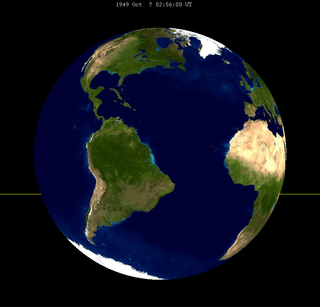 |
Total | |
| 131 | 1950 Apr 02 |
Total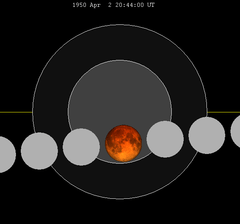 |
136 | 1950 Sep 26 |
Total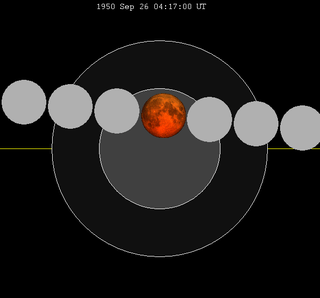 | |
| 141 | 1951 Mar 23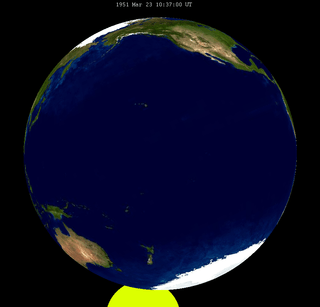 |
Penumbral |
146 | 1951 Sep 15 |
Penumbral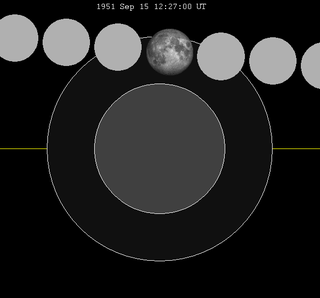 | |
Saros series
Lunar Saros 111, repeating every 18 years and 11 days, has a total of 71 lunar eclipse events including 11 total lunar eclipses. The first total lunar eclipse of this series was on April 19, 1353, and last was on August 4, 1533. The longest occurrence of this series was on June 12, 1443 when the totality lasted 106 minutes.
Half-Saros cycle
A lunar eclipse will be preceded and followed by solar eclipses by 9 years and 5.5 days (a half saros).[1] This lunar eclipse is related to two annular solar eclipses of Solar Saros 118.
| April 19, 1939 | April 30, 1957 |
|---|---|
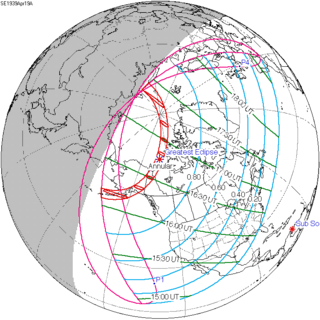 |
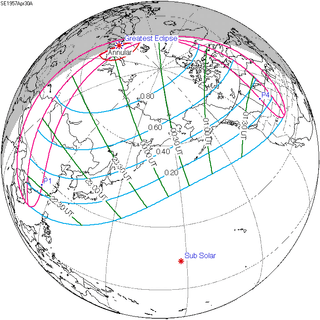 |
See also
- List of lunar eclipses
- List of 20th-century lunar eclipses
Notes
- Mathematical Astronomy Morsels, Jean Meeus, p.110, Chapter 18, The half-saros
